|
Anxiety is a very normal part of being human, and we all experience it on some level from time to time. It’s our inbuilt early warning system that has been designed by evolution to warn us when there might be trouble, and ready us to deal with it. Sometimes though, the early warning system works a little too hard, switching on too often when there’s just no need.
Anxiety can be thought of as the workings of a strong healthy brain that’s being a little overprotective. It’s not crazy and it’s not troubled. It’s overprotective. Like anything overprotective, anxiety can be intrusive, confusing and exhausting. For some people, there may be no outward clues that they are anxious at all. Their symptoms will be managed beautifully and will have minimal, if any, intrusion into their lives. For others, anxiety can be debilitating. The stats on anxiety are staggering. Anxiety is so common, that if you aren’t experiencing it yourself, it’s very likely that someone you care about is. Bupa has created an infographic that illustrates some of the statistics. Find it in the Blue Room here: ‘Feeling Anxious? You’re Not Alone’. Anxiety is just another part of being human. We all have our ‘stuff’, and anxiety is just one that many of us will struggle with from time to time. If someone close to you is experiencing anxiety, there may be signs. Sometimes they may be obvious. Sometimes, they may make their way into the shared space between you in more subtle ways. As with anything that’s happening the lives of the people we love, it is when anxiety is misunderstood or ignored that it can do the most damage. Here are some subtle signs to watch out for. If you see them happening, don’t make a big deal of things. For the person you’re with, they would have been likely living with it for a while. Just be there and know that you don’t need to fix anything. None of these behaviours necessarily mean anxiety is causing trouble for someone you care about, but they might. Being open to the signs and the different ways anxiety looks when it lands will help you to be a strong, steady, soothing presence (rather than a confused one) for the person you care about. And we all need that from time to time. The Subtle Signs of Anxiety.
Anxiety can also come with an abundance of strengths. Anyone who experiences anxiety would always choose not to have it, but it can also work to shape the person someone is in many ways for the better. People with anxiety will be some of the strongest, most emotionally generous, intelligent, creative, funny, warm and wise people you could meet. Above all else, know that anxiety isn’t a failure, a disease, a weakness or a deficiency. It’s just another part of being human, and the sometimes beautiful, sometimes messy, sometimes ridiculous art that it is. We all have things that we struggle with. Ultimately, they are the things that will make us braver, wiser, stronger, more compassionate humans. It’s just the way it seems to work. There is nothing to be scared of with anxiety. Nothing at all. Understanding when anxiety might be driving behaviour will help to stop anxiety feeling intrusive, confusing or isolating. One of the greatest feelings in the world is being close to someone who gets us, or who tries to. The truth is, we’re all complex beings with plenty of mystery to our edges. There are few things that feel as wonderfully strengthening and enriching than when someone makes an effort to understand us through our own eyes, from wherever we happen to be. * This post has been sponsored by Bupa, but the views are the author’s own. About the Author – Karen Young.Karen has worked as a psychologist in private practice and in educational and organisationalsettings. She has lectured and has extensive experience in the facilitation of personal growth groups. She has an Honours degree in Psychology and Masters in Gestalt Therapy. Karen founded the popular website, Hey Sigmund, after realising the power of solid information. The website attracts millions of readers each year worldwide. Her articles have been translated into a number of languages and her work has been published on various international sites including The Good Men Project, The Huffington Post, The Mighty, and Yahoo Health. Protect yourself from Burnout by taking time to notice when you’ve done a good job
It’s hard to like people who boast a lot. But deep down, underneath it all, you and I know something about why they do it. It’s because they feel insecure. As I’ve got older, I’ve noticed that people who are good at what they do don’t waste time talking about it. They just get on with it. They work hard, they invest their lives in helping other people. And, they tend to ask for very little in return. They are, in my view, the salt of the earth. But, while extending kindness to others is key to helping people thrive, it can also lead to compassion-fatigue where you find yourself with nothing left to give. The good and bad of being productiveBeing productive has many benefits. You get lots done, you’re more organised and you can deliver a better service to your patients and your students. Productivity is active. It’s doing. Its moving your feet or your hands. And when you contribute in these ways, people notice it. They notice, because it impacts them. If you do it well, then it makes their lives better. But productivity can have a dark-side. When you’re ambitious and you work in public service, there is always something to do. There is always someone else who needs your help and there is often a better way of doing things that hasn’t yet been discovered. When you value productivity, you risk being over-active to the point where you are likely to burnout. What braggers and non-braggers have in commonYou might think that people who brag a lot and those that never brag are completely different people. And, I think you’d be right in some ways. What they do and how they appear to other people is very different. But, what if, under the surface, the same insecurities that cause some people to show-off are the same insecurities that drive excessive modesty? Fears of failure are common in my experience. So too are beliefs that “I’m useless” and “I’m inadequate.” And these beliefs can be painful, because you feel ashamed, sad or anxious a lot of the time. And the way people cope with these feelings can be different. Here are several examples:
These two groups of people have something to learn from each other. Those that boast a lot would benefit by taking a leaf out of the book of the modest co-worker. If they could learn to tone-down what they say and how often they say it, everyone would appreciate it. And I believe, that the productive carer and teacher who is always thinking about what else needs to be done, could learn something in return. And that something is to celebrate your professional successes. What does actual success look like?So, what does a professional success look like? This will vary on your circumstances e.g. job role, environment and level of responsibility. Your job description might provide some clues, but it would make a lot of sense to identify this in your own words. What does you doing a good job look like? How do you know when you’ve done it? A professional success is what you set out to do every day when you arrive at work. And, to bring this alive even more and to make it easier, think back to a time in the past when you have felt really energised. Let your mind settle on that sweet-spot, which is a time when you felt like you were doing your job and being deeply fulfilled from it. It may have been a time when you felt deep pride or joy. And, it may have been a time when you felt angry or scared, but you did something important and meaningful that made a real difference. The feeling isn’t so important. Its more about finding a memory that you are glad to have. A memory that you wouldn’t want to forget. When you have chosen something, write it down. And then write down what you think it says about what is most important to you. You are looking for a value, which is a verb or an adverb like caring, supportive, lovingly or courageously. These words represent what you truly value and tell you the kind of person you want to be. Once you have identified your values, you can use these as a guide to define professional successes. A professional success is when you do something that is consistent with what you value. Is it still a success when you don’t make any difference to someone’s life?This question goes straight to the heart of the traps professionals often fall into when they evaluate success. Successes are shaped by outcomes e.g. does a patient get better or does a student pass an exam? These are the successes by which your employer measures things. They are connected to targets they receive from government. And, whilst reducing mortality rates and academic achievement are important goals, a problem occurs when you equate those targets directly with your own professional successes. They aren’t entirely dependent on your individual actions. When you care for someone, you can’t control how well they take care of their health. When you teach someone, you can’t control what they learn. Outcomes are dependent on what others do as well. Therefore, it works to measure your own professional success by what YOU do. How to reasonably measure successWhen it comes to measuring your own successes, there are two things to factor out or ignore. They are what your patient or student does and what your peers think about you. The reason is that you have limited control over these actions. So, why would you judge your own success by what other people do? It just wouldn’t make sense. And, it wouldn’t be fair. The two areas that make much more sense are:
Your level of skills is determined by how much you’ve practiced and adapted. Knowledge and skill are related. This is sometimes called your declarative knowledge and your procedural knowledge. And, how effective you are being is influenced by the combination of these dimensions. Allocate some time to noticing your successesThe hope is that when you focus on what you understand and how you can get better, then it will have a stronger influence on people. People will find it helpful and say good things about you. But it is not guaranteed. Sometimes, it won’t work. And it does not help to focus on those as failures. What works much better is to allocate some time to noticing your professional successes. It doesn’t have to be a long exercise and it doesn’t have to involve telling everyone. But, it is important that you at least notice your successes yourself. When you are training, it helps to get a balance between ‘not knowing enough’ and noticing when you’ve done a good job. When you neglect to identify examples of when you’ve done something well, not only do you deny yourself the chance to feel pride, you also deny yourself the chance to get better at what you are doing. When you’ve been in the job a while, your standards get higher. It’s easy to regard what you do every day as ‘nothing special’. You might think “that is what I am supposed to do.” And, so you downplay the success of it. But, if that action is what you are supposed to be doing and it is what you care about, then why not tell yourself ‘well done!’. What have you got to lose? When you invest in your professional development throughout your career, it protects you against burnout. When you stop learning and developing, you can become stagnant. And when you stop moving forwards, you start going backwards. There is no such thing as standing still. In this article, you have explored getting a balance. You have explored getting a balance between ‘doing’ and ‘slowing down’. Doing is what makes you better and helps you to make professional successes. Slowing down is what helps you to notice your successes, so you can build on them and revitalise your spirit. When you notice your successes, it shows you that you are on the right path. Try not to dismiss them. It won’t protect you from burnout, but noticing them can save you. Noticing them can help you thrive, which consequently, will helps others to thrive as well. Thanks for reading this article, which is the 3rd in a series about protecting yourself against burnout. You can read the first article here and the 2nd article here. I’m taking some time off over the next couple of weeks to re-charge and have some fun. I’ll be back with the next article in this series in early September. If you’ve enjoyed this article, please leave a comment and share it around. About Jim Lucas Jim is the Founder and Managing Director of Openforwards. He is a BABCP Accredited CBT Therapist / Supervisor & a Teaching Fellow at University of Birmingham School of Psychology. He writes articles, records podcasts and creates online courses to give you the opportunity to get the knowledge, skills and support to help you feel and cope better. For those of you who feel confused and a little bit overwhelmed maybe by the new demands on all of us from the GDPR regs that come in on 25th may.....here is a great easy explanation of what its all about and how it affects us personally and at work. It's FREE...short videos & short articles and they advise only takes 12 hours to complete.
www.futurelearn.com/courses/general-data-protection-regulation 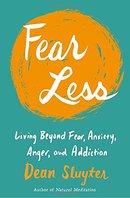 I came across this the other day .... its available from Amazon - for those of you who aren't yet confidently into meditating it offers easy everyday ways to calm anxiety and re-centre yourself. Thought you might like to read the article too :0) This Simple Exercise Can Guide You Through Your Hardest Times Breathe through your feet? The author of Fear Less explains that, yes, it can help. By Dean Sluyter Suppose you're in a conference with your soon-to-be ex and a couple of divorce lawyers. Or you're waiting for the doctor to call with the results of your biopsy. Or you're sweating through your third week of sobriety and trying hard to hang on. Or you're on your umpteenth morning commute and feeling your road rage approach the boiling point. Or you're in the dentist's chair, bracing yourself for the root canal... Those are some seriously unpleasant situations. And what I'm going to suggest might seem like a completely unserious way to address them. In fact, it might seem almost insultingly simple. But appearances can be deceiving. In the immortal words of Spinal Tap, "It's such a fine line between stupid and, uh, clever." So give it a try for yourself. Breathe through your feet. That's it, essentially. Simple, but let's break it down: Bring your attention to the soles of your feet. You might notice that this completely ordinary act of attention takes no effort—as soon as you think of it, it's already happening. You might also notice that it involves a combination of feeling and subtle visual imagining, which you've done all your life. If I say, "Left ear," you immediately imagine-feel your left ear, with no effort or learning curve required. Now, breathe normally, but each time you breathe in, imagine-feel that you're breathing in through the soles of your feet. Each time you breathe out, imagine-feel that you're breathing out through the soles of your feet. That's all. I'm sure you've already heard that sitting and meditating every day is an excellent way to reduce anxiety, but in case you're not there yet, this highly portable strategy doesn't require any sitting at all, and you can put it to use right away. Don't worry about how fast or slow or deep or shallow your breathing is, or whether your breathing pattern stays the same or changes. Don't strain to concentrate or focus. Don't try to push away thoughts or sounds or anything else. Don't try to feel any special way. Just breathe through your feet and let everything else be however it is. Please take a few moments to practice this right now. . . . . . . . . . Okay. Welcome back. You may notice that you feel a little less stuck in your head, in the buzzing of thoughts and feelings. Perhaps there's some sense of being more grounded, centered or refreshed. If you're not sure, that's fine too. Meditative experience (which is what this is) is constantly changing, and we don't worry about whether it seems subjectively "good" or "bad" in any given session. Now, as you go through your day, you can come back from time to time to this practice of breathing through your feet. Be creative about using it in different places and situations. This is your new toy. Anytime you like, you can pull it out of your pocket and play with it: when you're stopped at a red light, standing in line, waiting for a movie to start, working at your computer. Tune in to the technique and get familiar with it when things are fairly relaxed and uneventful. Then, when the stress hits the fan, you're ready. Even as your plane encounters turbulence or you're nervously waiting for the job interview or you're getting the phone call from the Bad-News Boyfriend, you can breathe through your feet and fear less. You've practiced the drill and you're ready for the fire. Feelings of worry or anger will still arise. Don't try to suppress those feelings, but don't act on them either. Don't fixate on them or try to distract yourself. The feelings are just there, like everything else: the temperature of the air, the color of the walls or the sky. You have to breathe anyway, so just breathe through your feet and you may notice that you're not quite as tightly gripped by the stressful feelings as you were before. When you go to bed tonight, you may enjoy falling asleep while breathing through your feet. If you normally toss and turn, you may find that this technique makes sleep a smoother cruise, and if you wake up in the night, you can just cruise some more. Adapted from Fear Less: Living Beyond Fear, Anxiety, Anger, and Addiction, by Dean Sluyter, copyright © 2018. Published by TarcherPerigee, a division of Penguin Random House, Inc. Using the Franklin Method for Back Health
Apr 19, 2018 Author - Mollie McClelland Morris chronicpain, exercise, health When most of us think or talk about our backs, we usually say things like “my back is stiff and tight”. “I have herniated discs”, and “my back is really sore”. Fitness instructors say that our lower back needs “protecting”. In fact, if someone answered “How are you?” with, “My back feels really dynamic and strong today and I feel great.” we would probably laugh. Many of us are searching for ways out of pain, and there are many modalities to try, including manual therapies, massage, osteopathy, or rolfing or exercise, pilates or yoga to strengthen the back. Others take pills, herbs, hot baths, cold compresses, taping, foam rolling, new shoes or mattresses even surgery to have less pain in the back. The science around pain, and back pain specifically suggests that there is not a direct correlation between “injury” and pain. Pain is sometimes present with no injury and likewise, many of us have small bulges in our discs, with no symptoms. So what is going on, and what can we do to feel better? Research is beginning to suggest that the very thoughts “My back is stiff and tight” actually create and reinforce back pain. The belief that our back is fragile and in danger creates that state in our bodies. When we talk about our bodies, especially our backs, the language is usually profoundly visceral, and overwhelmingly negative. We are creating those qualities as we move, by thinking about our body in that way. What if we worked with our mind first, and used that tool to change the body? Franklin Method starts there: by changing our thinking about our movement. It is truly a methodology for improving movement using the mind and body. Try this exercise: Move your shoulders up and down a few times. Check in as you do it. How do you feel? You might feel tight or stiff, or you might really enjoy moving. Now, as you move your shoulders think about how you would like your shoulders to feel, maybe smooth or light. As you move, say the words: “my shoulders are light and smooth”. Has anything changed? Now say the opposite: “my shoulders are heavy and clunky”. You may feel that your body instantly takes on what you are thinking, and that the movement is immediately heavier and laboured. That is a simple exercise that shows how thinking affects the body. Do the same in spinal movements. Think about the qualities you want to feel as you move. Say “my spine is free and strong”. Add breath to your movement. You may discover that your pain is already dissipating. The mental shift in this exercise is the beginning of our internal healing toolkit. While very helpful, it may not be enough to totally heal from pain. Through anatomical and biomechanical images and exercises students experience the body’s physical structures, to move more efficiently and effectively. The understanding and embodiment of our form and function creates a fully developed and integrated system of movement exercises and visualisations, often using bands and balls for training and conditioning. Franklin Method can also work alongside other movement practices, including pilates or yoga, and can be applied to any physical activity including horseback riding, running, or surfing. Where Franklin Method differs from other modalities is that it is not just a set of exercises to do. The toolkit for creating healthy movement includes metaphor, clear anatomical and biomechanical visualisation and embodiment, motivational imagery, touching and tapping for better proprioception, and even mental simulation of a movement and its desired effects. Using this detailed and varied imagery, students find new movement pathways, stimulate under or overused muscles, tone and relax the body and feel better. And why is this important? In my first Franklin Method class, Eric Franklin, creator of the method asked us to rate a movement experience. For the majority, the experience was average. Then asked if we wanted to live an average feeling life, we all answered no. These tools can help us heal from pain, but also can help us live our lives in the best possible way. Both empowering and challenging, Franklin Method asks us to take responsibility for how we create our experience in our body and mind, and then gives us tools to continually improve. Mollie McClelland Morris I came across this today and its one of the best articles I've seen on sleep and managing the difficulties of getting enough. I'm reposting it here for you to read ..... and I would wholeheartedly recommend the calm.com app for its many different evolving options to encourage wellbeing.
3 key ingredients for good sleep HEALTH & HAPPINESS, SLEEP We’ve all been there—tossing and turning, willing our tired bodies to hit the sack when it refuses shuteye. To help, we turn to sleeping pills, herbal remedies, over-the-counter sleep meds and other antidotes. But the truth: we already have everything within ourselves to get a good night’s sleep—it’s built into our amazing mechanism as human beings. So why then do we still struggle to get good Zzz’s? Most, if not all, slumber problems stem from not having one or more of three key sleep ingredients in place when it’s time for bed. 1. Feeling sleepy. It may sound obvious, but many times we go to bed before we’re actually sleepy. And by “sleepy” I mean not just feeling tired or even exhausted, but where you actually find yourself nodding off. And while our reasons for hitting the hay may seem sound: it’s your usual bedtime, your partner is going to sleep so you should too, or you want to get “the right” number of shuteye hours—if you’re not sleepy, you won’t sleep. So how can you ensure your body is ready for lights out?
It can be challenging at first, especially on the weekends, when all you want to do is stay in bed and sleep late. But your body will adjust after a few weeks—making it easier to wake up earlier (which means more time to enjoy your days off!).
2. Allowing Yourself to Relax. Relaxing in the evening is challenging for many. Life can be stressful and demanding, so when bedtime comes, we can still be wound up, making sleep feel impossible. Here are a few tips to get relaxed before bed:
It’s important to carve out this time for yourself. Mark it into your calendar so nothing else will take its place.
3. Listening to your sleep signals. Many of us try to force sleep or expect it to come when we want it to. But just as our body will signal when it’s hungry, it will tell us when it needs sleep. Unfortunately, we lose touch with this innate signal because we (unknowingly) interfere with our sleep by trying to make it come. But your body will sleep when it’s ready. Learning what to do, and not do, to reset your sleep cycle and being in touch with your body’s signals are fundamental to get and maintain a strong, consistent and healthy sleep pattern. For more details on how to achieve this and cultivate great sleep, listen to the introduction to Sleep Stories at www.calm.com and check out my story in the app. Dr. Steve Orma is a clinical psychologist, recognized mental health expert, and specialist in the treatment of insomnia, anxiety, and stress. Generally, one of the aims of starting this blog, was to communicate the things I find in life that are useful and improve our ability to live our best life. Today I want to include Dr Gregers post on the benefits of turmeric. I've tried it myself and it has worked. That doesn't mean of course that it will work for everyone .... and its always important for each individual to be cautious, aware of their individual needs, and aware of potential allergic reactions to anything ingested. Dr Greger advises just 1/4 teaspoon a day which can be mixed with a variety of foods and drinks. He describes it as powerful stuff ! See what you think ..... What to Take After Surgery
Written By Michael Greger M.D. FACLM on March 13th, 2018 Medicine is messy. One of the reasons researchers experiment on animals is they can create uniform, standardized injuries to test potential remedies. It’s not like you can just cut open 50 people and see if something works better than a sugar pill. But, wait a second, we cut people open all the time. It’s called surgery. In my video Speeding Recovery from Surgery with Turmeric, I discuss a double-blind, randomized, placebo-controlled study that investigated the efficacy of turmeric curcumin in pain and post-operative fatigue in patients who had their gall bladders removed. Fifty people were cut into and given either curcumin or an identical-looking placebo, along with rescue analgesics—i.e., actual painkillers to take if the pain became unbearable. Even though it’s just laparoscopic surgery, people don’t realize what a toll it can take. (You can be out of commission for a month!) In India, turmeric—found in curry powder—has traditionally been used as a remedy for traumatic pain and fatigue, so the researchers decided to put it to the test. According to the study, in the weeks following surgery, there was a dramatic drop in pain and fatigue scores in the turmeric curcumin group, with p-values of 0.000. Those are my kind of p-values! The “p-value” refers to a measure of the strength of evidence. The smaller it is, the stronger the evidence is that the result they found didn’t just happen by chance. By convention, a p-value under 0.05 is considered small enough for a result to be considered statistically significant. This means that you’d only expect to find a result that remarkable simply by coincidence 5% of the time, or in 1 out of 20 cases. So a p-value like the one in the study, <0.000, suggests you’d have to run the experiment thousands of times before you’d come up with such a dramatic result just by chance. It’s hard to come up with objective measures of pain and fatigue, but drug-wise, the curcumin group was still in so much pain they were forced to take 7 of the rescue painkillers. In the same time period, though, the control group had to take 39 pain pills. Of course, it’s better not to get gallstones in the first place, which you can learn more about in my video Cholesterol Gallstones, but the researchers’ conclusion was like no other I’ve ever read in a drug trial. “Turmeric is a natural food ingredient, palatable, and harmless.” Okay, so far so good. It continued: “It proves to be beneficial as it may be an ecofriendly alternative to synthesized anti-inflammatory drugs which have a definite carbon footprint due to industrial production.” Since when do surgery journals care about the greenhouse gas emissions from drug companies? I just had to look up the reference in the journal Surgical Endoscopy entitled “Journey of the Carbon-Literate and Climate-Conscious Endosurgeon Having a Head, Heart, Hands, And Holistic Sense Of Responsibility.” I don’t know what’s stranger, seeing the word “holistic” in a surgical journal or the name of this guy’s practice: “Dr. Agarwal’s Surgery & Yoga.” The benefits of turmeric are clear—and not just as a remedy for pain. The spice also serves as a potent treatment against cancer, as I explain in these videos:
In health, Michael Greger, M.D. PS: If you haven’t yet, you can subscribe to my free videos here and watch my live, year-in-review presentations:
Michael Greger M.D. FACLMMichael Greger, M.D. FACLM, is a physician, New York Times bestselling author, and internationally recognized professional speaker on a number of important public health issues. Dr. Greger has lectured at the Conference on World Affairs, the National Institutes of Health, and the International Bird Flu Summit, testified before Congress, appeared on The Dr. Oz Show and The Colbert Report, and was invited as an expert witness in defense of Oprah Winfrey at the infamous "meat defamation" trial. Facebook Twitter Google+ YouTube InstagramPinterest A couple of take-aways from the first free Mindfulness Course by FutureLearn & Monash University - Mindfulness for Wellbeing and Peak Performance ...........
A colleague passed this gem along to me with good recommendation, and I post it here for your interest too. The two free courses are provided by Future Learn in collaboration with Monash University Australia and involve no assessment.
The first course is an introduction to mindfulness aspects -Mindfulness for Wellbeing & Peak Performance. The second course - Maintaining a Mindful Life - shows how to apply mindfulness techniques in our daily lives. (see pics below) Both courses are made up of a combination of very short, easy to understand videos (e.g, 2 mins; 8 mins); audio recordings of short meditations etc ; articles, also short and easy to assimilate ; and online chat discussion with fellow participants. You can choose to go further to paid sections and receive a certificate, but the free section of the course is an entity in itself and very informative. A good step forward into mindfulness. Type mindfulness in the search box of www.futurelearn.com. The two course options should appear with registration guidance. It wasn't possible to link you to a sample video with sound unfortunately, but here is part of a transcript of a short video - a commentary on the benefits of mindfulness. So, when we're being unmindful, not paying attention to any one thing in particular, something called the default mode network activates in our brain. And that network is associated with rumination, worrying. It's also associated with depression, and later in life, it's associated with the development of Alzheimer's. So, when we're not being mindful, or we're not paying attention, a brain state is activated that can cause all these carry-on negative effects and really affect our mental health. So, research by Lazar and colleagues has shown that after eight weeks of meditation practise of only 15 minutes a day on average, participants showed thickened hippocampuses..... those are the areas of the brain that are associated with memory. My personal favourite is Calm.com .... it offers sleep stories for grown ups which are delightful, as well as a wide selection of meditations covering many areas of focus.
http://calm.com/app www.malaforest.com/ offer a broader review here - what they consider the best mindfulness apps for a healthy mind. https://www.malaforest.com/blogs/news?page=2 ....... The Best Mindfulness Apps For a Healthy Mind "Mindfulness is a form of meditation or mental training that helps us to live in a state of awareness of our life experiences without judgment. The practice of mindfulness has a diverse set of benefits such as stress reduction, improved memory, heightened concentration and even improved physical health.
Check out these best meditation and mindfulness apps that will have your mind feeling fresh and powerful in no time. 1. STOP, BREATHE & THINK This meditation and mindfulness app has been downloaded over two million times and we can see why. Pledging that after a few weeks you can create your own personal forcefield of calm and peace, this app can get you meditating within 5 minutes with their user-friendly interface. Stop, Breath & Think will recommend meditations for you to practice each day based on how you feel so that all you have to do is select one and hit play. Available: iOS, Android, Web 2. HEADSPACE Treat your head right with a personal trainer for your mind from the meditation app, Headspace. This app is great for people getting started with meditation. The first level in the program teaches you meditation in easily digestible ten-minute sessions. Once this starter program is complete, you can subscribe to access thousands of hours of content available at your fingertips. What’s unique about Headspace is that with over five million users, you can buddy up with friends to motivate each other and keep on the path to a healthier mind. Available: iOS, Android, Web 3. TAKE A BREAK! BY MEDITATION OASIS You don’t have to munch on a Kit Kat to enjoy this mindfulness app! The Take A Break app allows you to choose between a short or long meditation break. You can even decide to listen to the ocean, rain or even your own music if you’d like. Although we wouldn’t recommend cranking Drake during your meditation period, having the flexibility to shape your own experience is a nice feature. The app also features a simple design so that you spend your break meditating and not fumbling with a million app features. Available: iOS, Android, Web 4. MINDFULNESS APP: GUIDED & SILENT MEDITATIONS TO RELAX We obviously couldn’t write a blog about mindfulness apps without reviewing this app. Although the Mindfulness App is not free ($1.99), it is a great tool for finding moments of peace to appreciate life and relax your mind. What’s great is this app allows you to select guided or silent meditations at the length of your choice so no matter what level of meditation experience you have you are covered. Users can also purchase in-app meditation lessons from renowned teachers such as Tara Brach and Eckart Tolle. Available: iOS, Android, Web 5. RELAX MELODIES I wanted to end this article with an app designed to help improve sleep quality because if you’re anything like me sleeping soundly Mon-Fri is anything but possible. What’s unique about this app is that each user can select the sounds and melodies they like and mix them together for a playlist. It’s that straightforward. You can also set an alarm so you don’t have to worry about draining your battery overnight. Make this app go further and try it out during your next meditation or yoga session. Completely customize your experience with this app and tailor it to suit your relaxation and sleep preferences. Try it out and get back to sleep in no time! Available: iOS, Android, Web Whether you’re looking for a gym for your mind or sleep aid, the convenience and simplicity of these apps make it easy to start leading your healthier life today. " Good wishes for your journey to increased inner peace. Remember ... any change takes commitment and perseverance at first. You should notice benefits quickly and then you will want to, even feel you need to, maintain that momentum for your own well being. :0) My own feeling is it’s been a long cold winter this year. Made worse by the threat of Aussie and Japanese ‘flu around and about. It will be wonderful when the worst of the chill subsides and we can see the spring approaching. Having been a hibernating animal myself these last few weeks I was interested to read an article by Tamara Lechner which seemed to be saying ‘well that’s ok’ 👍. Listen to your body and do what feels right.
Here is some of that good advice ...... https://chopra.com/articles/5-reasons-hibernating-during-winter-is-good-for-you The winter blahs can certainly get you feeling sleepy, lethargic, and downright uninspired. It’s cold and dark, and people tend to get worn down from the holiday festivities. Rather than fighting the feeling that tells you to hibernate, why not listen to your body? According to Ayurvedic doctor Virender Sodhi, “Your body is nature's pharmacy, it has everything you need to be healthy.” This refers to the process of listening to the signals that your body gives you and then acting on them. Rest More If you follow nature’s cues, days are shorter and nights are longer. This could indicate that a longer sleep time is necessary. When you feel tired and yet it's only 8:30 p.m., that's not time to muscle through and keep working, it's time to feel your body and recognize ‘If I feel like it's a lot later than 8:30, what can I do about this? Maybe I should go to bed?’ Getting a full night’s rest isn’t a sign of weakness—it’s a smart way to feel better and be healthier. A sure sign you need more sleep is if you are waking up already tired. Aim to get to bed early enough that you can wake up on your own without an alarm clock. Wrap Up Crawling under layers of blankets can be a sign that your body is just not at its peak temperature. For some people, a warm snuggly blanket feels like a hug from a friend. If you check in with why you want that blanket on, maybe you're trying to soothe yourself or maybe you are actually cold. When you have that desire to start snuggling under blankets, check to see what the temperature of your fingers and toes is. Then check your ears and nose. If these extremities are actually physically cold, it's no wonder you want a blanket! But what if you're not cold? What if everything feels warm and you still have this desire? Maybe you need the emotional support a hug or the physical touch of a snuggle. Eat Well Humans seem to be slaves to their food cravings in these wintry months. This is a time to listen to your body. Be a detective. Think about what is it asking you to eat and then find a natural healthy alternative. Your body is trying to tell you something; however, if your pattern in the past has been a quick hit of sugar, starch, or salt to fix this craving, you need to pay close attention to retrain those patterns. Winter is a time for warm, hearty, and healthy foods like stews and curries. Go Outside The days are shorter and sometimes this means your morning run or your evening dog walk are missed. Instead of removing these moments where you get fresh air, natural light, and exercise from your day, try to make time to get outside regularly during your lunch break or in the late afternoon. Schedule it ! It is easier to accomplish something when it is on your calendar. The time outside will help you to feel less sloth-like. Spend Some Time Alone The last thing you might consider when you are wanting to hibernate is that it may be a sign that you need some alone time. It's okay for you to want some time alone. Just because you love your family or enjoy your colleagues, it doesn't mean you want to be with them all day, every day. If you're feeling the need for space, give it to yourself. Alone and lonely are not the same. Spending some time alone can feel luxurious. Cocooning in the winter means you can be freshly reborn in spring. Be gentle with yourself when you feel lazy. It doesn’t help at all to berate yourself for your lack of energy or inspiration. Stay cozy, fuel yourself with good food, and give yourself big bear hug. When you are ready, you can emerge revitalized and ready for great things. 🌬☃️❄️ ☔️ This is one of the hardest things, but one of the most essential ..... when your mind is racing with thoughts, and your world feels aggravated by outside factors.....take just a few minutes and tune into where you are. - Be still. - Let your mind and body return to their most important focus. You.
Just for a few minutes. In most circumstances we could do this..... at the very least a visit to the privacy of the nearest loo where no one will disturb you. At home or at work. I can hear those of you with responsibilities challenging - a) that our self is most important, and - b) that we could find a few minutes. But remember the aeroplane story.... always put your own oxygen mask on first or you'll be no good whatsoever to others. It's hard. And its usually needed most at the times when its the last thing we want to do. When we feel overwhelmed its so easy to allow our emotions to snowball down Negative Street, gaining momentum as they go. In my blog on 18/2/18 I highlight the benefits of short meditation spaces and calming our body and mind back to a good vibrational level. You can find links to meditation apps there. And my blog on 6/1/18 contained a wonderful list of Mental Health Apps collated by Brighton & Hove Mind. Today I post links from the equally wonderful collection of podcasts created by the Mental Health Foundation. The podcasts offer breathing exercises and health advice .... with one breathing exercise taking as little as three minutes. Podcasts for your wellbeing Breathing yourself calm... *Three-minute mindfulness breathing spaceA three-minute mindfulness breathing space podcast, narrated by world-leading mindfulness teacher Ed Halliwell. *Mindfulness: 10 minute practice exercisePODCAST: This relaxation exercise is narrated by Mindfulness expert, Professor Mark Williams, and features a series of breathing and visualisation techniques. *Stress and relaxation: quick-fix breathing exercisePODCAST To be listened to whenever you feel tense and is a simple and great way to calm your mind and body down. *Stress and the mind: quick-fix relaxation exercisePODCAST Quick relaxation and breathing exercises which you can do anywhere to help clear your mind. *Wellbeing and relaxationPODCAST A short and easy form of meditation which can be effective in relaxing and reducing stress. *Stress and the mind: full worksPODCAST This podcast is presented by Dr David Peters and has a series of exercises which outline how to use positive emotions and imagery to ease pressure. *Stress and relaxation: full worksPODCAST Stress management techniques which can help relieve pressure from daily life. Eat well for good mental health .... *New Year's resolutions: a healthy dietPODCAST Exploring how diet affects our mental health and introducing some techniques to help make small changes to eating habits. *Wellbeing and nutritionPODCAST Presented by Dr David Peters, this podcast is intended to give the listener an introduction into how a good nutritious diet can help mental health. Exercise for mental health.... *New Year's resolutions: exercisePODCAST How exactly does exercise benefit both your mental health and physical health? We look at this, and some techniques to help you stick to a programme of regular exercise. *Exercise and mental healthPODCAST Find out how everyone can look after their mental health using exercise. Relax for sleep.... *Wellbeing and sleep: full worksPODCAST Helping you relax and get ready to go to sleep. Reducing anxiety .... *Wellbeing and positive thinkingPODCAST: Presented by Dr David Peters, this podcast introduces positive thinking as a way of reducing anxiety and encouraging focus and goal setting. *How to overcome fear and anxietyPODCAST Tips and advice for overcoming fear and anxiety. *What is mindfulness?PODCAST An introduction to mindfulness and its benefits. Enjoy ! Brighton & Hove MIND have done a fantastic job putting together a list of Apps to help in various ways with psychological health. Its a stunning list, I thought you'd like to see it....www.mindcharity.co.uk/advice-information/how-to-look-after-your-mental-health/apps-for-wellbeing-and-mental-health/
Apps for wellbeing and mental health "These days so many of us use apps in our everyday life for anything from shopping to entertainment to travel, but have you considered using them to look after your wellbeing and mental health?There are now more and more apps out there that can help with anything from managing your general wellbeing to those for more specific health concerns. Listed below are some apps** to get you started. Whilst these apps can be useful, they are not a replacement for seeking medical advice if you have concerns about any symptoms you are experiencing. **This list has been compiled by Mind in Brighton and Hove as a guide to Apps available to support your wellbeing. We are not able to recommend individual Apps. Please check the suitability of each App, and if there are any cost implications or compatibility issues.Whilst most of the apps listed below are free to download, please be aware of potential in-app purchases. Online safetyAlways make sure to keep yourself safe whilst online. For more information about online safety please visit the CEOPs 'Think You Know' guide to online safety. Additionally you may want to visit Mind's online safety page that contains helpful advice as well as their 'How To' Stay Safe Online Booklet. Apps For Mental Welbeing Elefriends (Free to use. For over 17’s only) Elefriends is a supportive online community from the mental health charity Mind. We all know what it’s like to struggle sometimes, but now there’s a safe place to listen, share and be heard. Whether you’re feeling good right now, or really low, it’s a place to share experiences and listen to others.
Silvercloud (Free to use) Silvercloud provides a wide range of supportive and interactive programmes, tools and tactics for mental and behavioural health issues. These programmes address wellbeing, life balance, time management, communication skills, goal setting, communication and relationship management, anger management, stress management, relaxation and sleep management, among many others. Reasons2 (Free to use) Reasons2 is a free app designed by Young People and Washington Mind to help improve mental health. The app will allow people to:
RCPsych Mental Health App (Free to use) This is an application developed for the Royal College of Psychiatrists by Dr. Melvyn Zhang. The aim of this application is to: 1. Provide general public information about key mental health disorders 2. Provide links to relevant videos and podcasts 3. Provide links to the Royal College Website to which members of the public could find further information about mental health disorders Five Ways to Wellbeing (Free to use) This app offers a practical way to help you feel good and function well in the world. Reflect on your wellbeing, set activities to help you improve your wellbeing and track your progress – all from the comfort of your phone; whenever it suits you! Based on substantial research, use the Five Ways to Connect, Take Notice, Be Active, Keep Learning and Give your way to improved wellbeing. The Five Ways to Wellbeing can help you with many different aspects of your life. There’s no daily dose or required level of work. Just use the app at your own pace to suit your life – you can even write and set your own personal activities. It’s wellbeing your way. Wrap – Wellness Recovery Plan (Cost - £3.03) WRAP® is universal - it is for anyone, any time, and for any of life's challenges. WRAP® involves listing your personal resources (Wellness Tools), and then using these resources to develop Action Plans to use in specific situations which are determined by you. The Wellness Recovery Action Plan® (WRAP) is an evidence-based system that is used world-wide by people who are dealing with mental health and other kinds of health challenges, and by people who want to attain the highest possible level of wellness. It was developed by a group of people who have a lived experience of mental health difficulties; people who were searching for ways to resolve issues that had been troubling them for a long time. WRAP includes:
Happier (Free to use) Happier helps you stay more present and positive throughout the day. Its Apple Watch app is like your personal mindfulness coach -- use it to lift your mood, take a quick meditation pause, or capture and savour the small happy moments that you find in your day.
Diary Mood Tracker – Daylio (Free to install. Contains adverts and in-app purchases) Daylio enables you to keep a private diary without having to type a single line. Pick your mood and add activities you have been doing during the day. You can also add notes and keep an old school diary. Daylio is collecting recorded moods and activities in the statistics and calendar. This format will help you to understand your habits better. Keep track of your activities and create patterns to become more productive. Catch it (Free to use) Catch It is a joint project between the Universities of Liverpool and Manchester, to help users better understand their moods through use of an ongoing diary. The app was designed to illustrate some of the key principles of psychological approaches to mental health and well-being, and specifically Cognitive Behavioural Therapy (CBT). Mental Health Recovery Guide (Free to use) There are 17 essential things you need to know to fast track your recovery from mental illness. The Mental Health Recovery Guide (MHRG) will tell you what they are. If you suffer from depression, schizophrenia or bipolar disorder, and if you are a mental health outpatient, or a newly discharged psychiatric in-patient at the UK’s NHS or elsewhere in the world, MHRG will help you to get well and stay well. Calm Harm (Free to use) Calm Harm provides tasks that help you resist or manage the urge to self-harm. You can add your own tasks too and it’s completely private and password protected. What does it do? The four categories of tasks target the main reasons for why people self-harm. Distract helps to combat the urge by learning self-control; Comfort helps to care rather than harm; Express gets those feelings out in a different way and Release provides safe alternatives to self-injury. Stay Alive (Free to use) This app is a pocket suicide prevention resource, packed full of useful information to help you stay safe. You can use it if you are having thoughts of suicide or if you are concerned about someone else who may be considering suicide. Apps For Depression and AnxietyWellMind (Free to use) Wellmind is your free NHS mental health and wellbeing app designed to help you with stress, anxiety and depression The app includes advice, tips and tools to improve your mental health and boost your wellbeing. What's Up? (Free to install but includes in-app purchases) What's Up? is a fantastic free app utilising some of the best CBT (Cognitive Behavioural Therapy) and ACT (Acceptance Commitment Therapy) methods to help you cope with Depression, Anxiety, Anger, Stress and more! With a beautiful, modern design, simple heading and easy-to-follow methods, you can get to what helps you the most in seconds! SAM: Self-help for Anxiety Management (Free to use) SAM is an app to help you understand and manage anxiety. The app has been developed in collaboration with a research team from UWE, Bristol. SAM will help you to understand what causes your anxiety, monitor your anxious thoughts and behaviour over time and manage your anxiety through self-help exercises and private reflection. The "Social cloud" feature will enable you to share your experiences with the SAM community while protecting your identity. Mood Tools - Depression Aid (Free to install. Contains in-app purchases) If you are feeling sad, anxious, or depressed, lift your mood with MoodTools. MoodTools is designed to help you combat depression and alleviate your negative moods, aiding you on your road to recovery. The app contains several different research-supported tools. They include:
Fear Tools – Anxiety Kit (Free to use) FearTools is an evidence-based app designed to help you combat anxiety, aiding you on your road to recovery. This application is especially useful for those suffering from Generalized Anxiety Disorder, Phobias, and Social Anxiety Disorder. The app contains several simple, useful, and powerful tools. They include:
Anxious Minds (Free to use) Anxious minds are a charity that was set up by sufferers of anxiety and depression, to provide free support to all suffers of anxiety and depression. No matter where you are, no one should suffer alone just because you cannot afford treatment or that you’re on somebody’s waiting list. Join our community and let’s start fighting back together and change the way mental health is supported forever, Social Network, Blogging Platform and Resource Centre; with an aim to encouraging people to gain knowledge and to share experiences relating to mental and emotional health issues - symptoms, treatments and medications. The app also includes:
Apps For Physical WellbeingCouch to 5k (Free to use) Walk and run your way to 5k this Couch to 5k app designed to take total beginners from walking to running for 30 minutes in just 9 weeks. Millions of people have already started running with our simple Couch to 5k plan - so download it now, grab your trainers and get ready to become a runner. Presented in association with BBC Get Inspired, the app builds you up gradually with a mix of running and walking. All you have to do is choose one of our four famous trainers and let them guide and motivate you through each session. Smart Recipes (Free to use) The FREE Smart Recipe app from Change4Life is an easy way of helping you prepare tasty, healthier meals the whole family will love. We all love tasty food but it’s not always easy to cook for the family if you're short on time and the kids are picky. Remembering ingredients and keeping track of portion sizes can be a hassle. But don't worry; our Meal Mixer will take care of that for you. Relax Melodies (Free to install. Contains adverts and in-app purchases) Relax Melodies is a relaxation and sleep app that allows you to select sounds and melodies that you like and combine them to create a mix. Lay back, listen, and enjoy falling asleep. This app can also be used in many other situations aside from sleep; perfect during some of your favorites activities such as relaxing at the spa, exercising in your yoga or relaxation classes, massaging sessions, or even when taking a nap! For parents, the ideal to help your baby fall asleep! ☆ FEATURES ☆
Apps To Support Those Suffering From Eating DisordersRise Up – Eating Disorder App (Free to use) Rise Up + Recover is an app for people struggling with food, dieting, exercise and body image. The app is based upon self-monitoring homework, a cornerstone of cognitive behavioural therapy (CBT). With the Rise Up + Recover app you can:
Recovery Record – Eating Disorder App (Free to use) Recovery Record is the smart companion for managing your journey to recovery from eating disorders including anorexia nervosa, bulimia nervosa, obsessive eating disorder, binge eating disorder and compulsive eating disorder. With Recovery Record you can:
BASE - Apps for younger people (Free to use) BASE is an app designed by Solent NHS Trust‘s Child and Adolescent Mental Health Brookvale youth Mental Health Service to help manage stress and anxiety. Stress affects everyone and is a completely normal reaction that people experience when feeling overwhelmed by situations they cannot manage. Stress and anxiety is very hard to control and sometimes we are unaware of what can cause our stress levels to go up. By learning more about how and why we experience anxiety at different times and in different situations we can be less fearful. Stepfinder (Free to use) Got a problem, need local help? StepFinder pin-points your nearest local support service and shows you how to get there using your phone. It shows you tips and recommendations from other young people so you know what to expect when you use a service for the first time. StepFinder is a totally free and confidential. So take control, and navigate to the right support. MindShift (Free to use) Struggling with anxiety? Tired of missing out? There are things you can do to stop anxiety and fear from controlling your life. MindShift is an app designed to help teens and young adults cope with anxiety. It can help you change how you think about anxiety. Rather than trying to avoid anxiety, you can make an important shift and face it. MindShift will help you learn how to relax, develop more helpful ways of thinking, and identify active steps that will help you take charge of your anxiety. This app includes strategies to deal with everyday anxiety, as well as specific tools to tackle: • Test Anxiety • Perfectionism • Social Anxiety • Performance Anxiety • Worry • Panic • Conflict Think of MindShift as your portable coach helping you face challenging situations and take charge of your life. MindShift is the work of a joint collaboration between AnxietyBC (http://www.anxietybc.com) and BC Mental Health & Addiction Services (http://www.bcmhas.ca). to help teens and young adults cope with anxiety – teaches relaxation skills, develops new thinking and suggests healthy activities. For more information...If you would like to find out more about additional online self-help programmes, websites and resources please visit our new page that contains a list of varying online resources available to help you maintain your wellbeing." I hope you find something to suit you in that extensive list.... with the added bonus of a link to self help programmes from MIND. A few years ago this was the picture on a christmas card sent to me by a dear friend, who had just lost her life partner after their enjoying many decades together. They were best friends and parents to two brilliant, now adult, children. Receiving it was a laugh out loud moment at a very sad time. I was flooded with admiration for her. That she could be even be bothered to send cards was amazing, but to be able to tolerate humour !
My own experience of Christmas over the years has been a mixed bag ... including different varieties of 'make the best of it'. Christmas dinners taken to hospital beds, Christmas hellos reduced to FaceTime as ‘flu struck all but one, ‘first’ Christmas’s of grief, visits thwarted by illness, and unexpected drives on quiet Christmas Day motorways. Christmas is now approached good humouredly with an open mind, cautiously wondering what will be in store this year. "Prepare for the worst ; expect the best ; and take what comes" seems a good motto. Amongst the more difficult times were the glorious times, small children, Santa Claus and christmas trees, the pleasure of giving, Christmas films and festivities, too many mince pies to mention. I remember one Christmas working with others to provide a Christmas Day meal for those who were alone or rootless or broke. An eye opener to the need for all of us to support those less fortunate than ourselves ..... at a time when the intensity of advertising and TV accentuates our losses and lacks, the weather is cold, and general services close down leaving an eerie isolation if you are without welcoming family. Not forgetting all our nurses, doctors, firemen, police, service industry workers, who carry on regardless, giving up their own home based Christmas to continue to look after us. Christmas can be many things, sometimes unexpected. One thing is for sure - it is pressure. Thinking of tips for smoothest survival in the Christmas period, these would be top of my list ......
Warm Christmas wishes to all. |
|
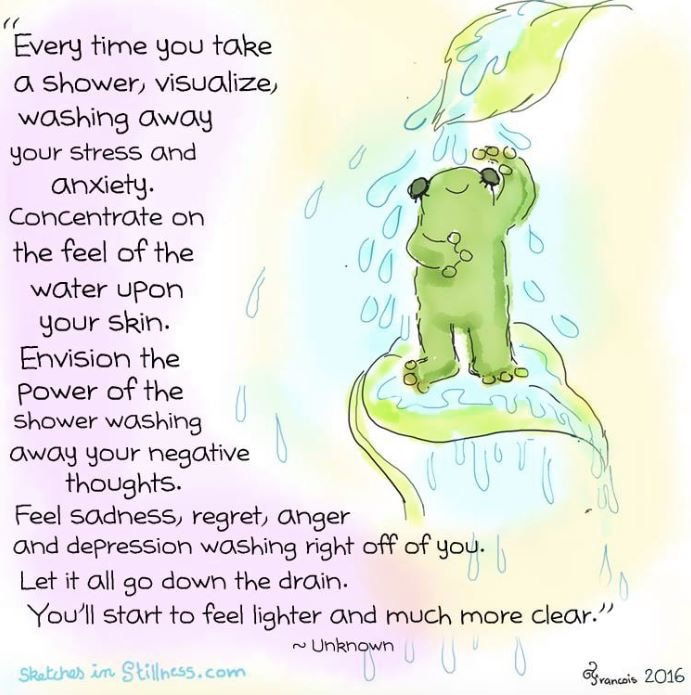
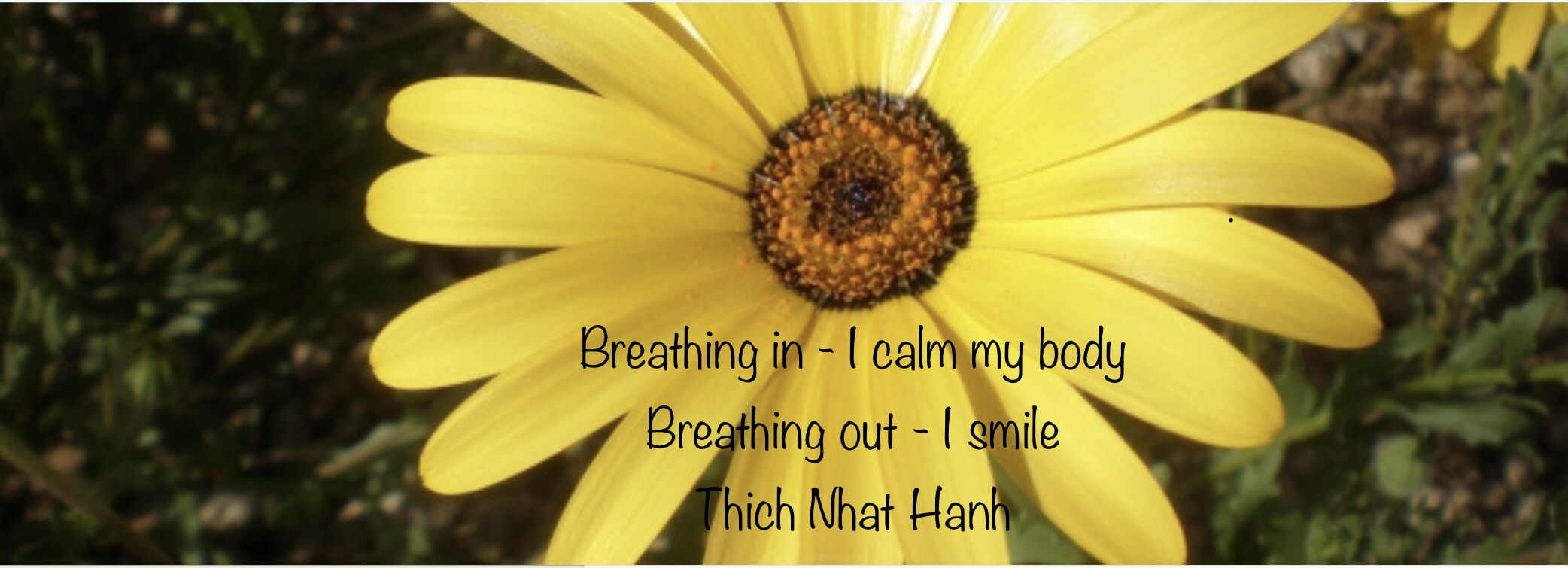

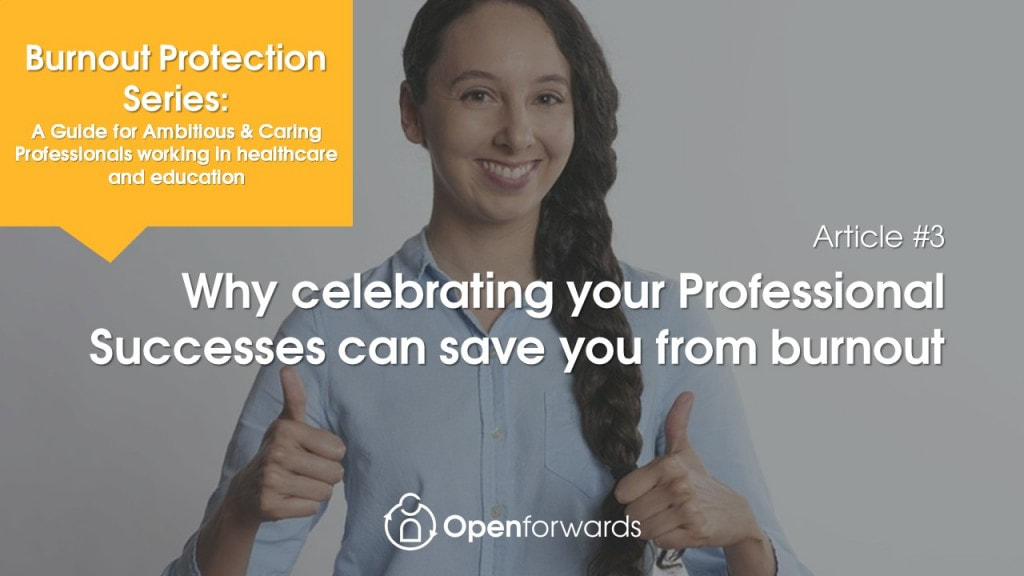
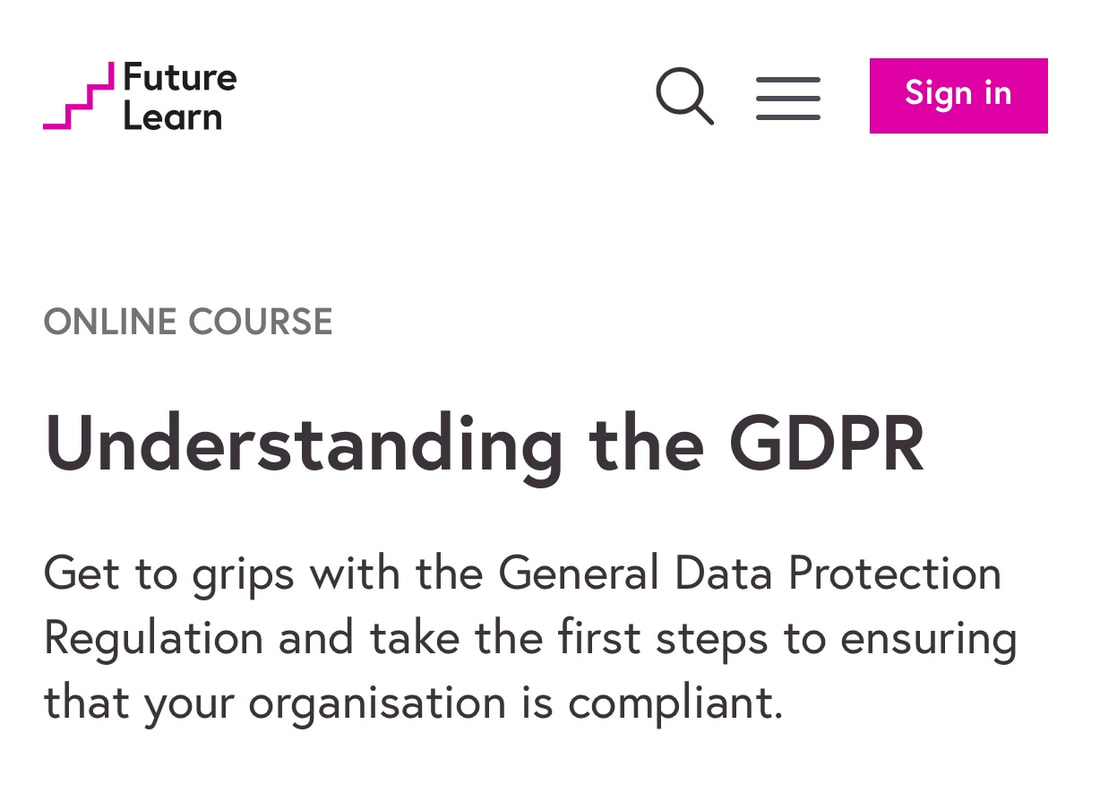
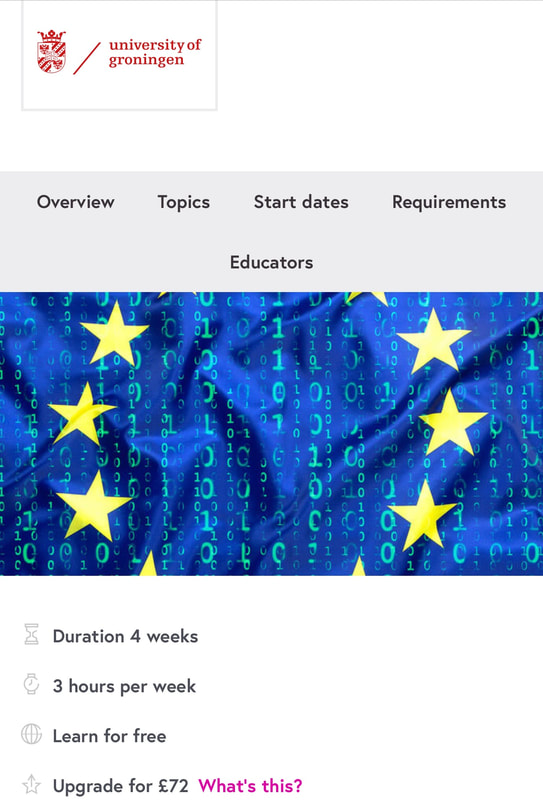
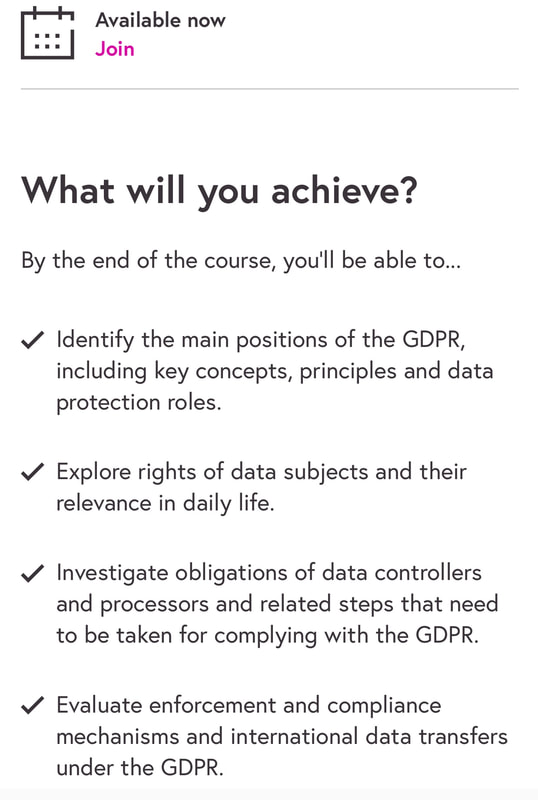
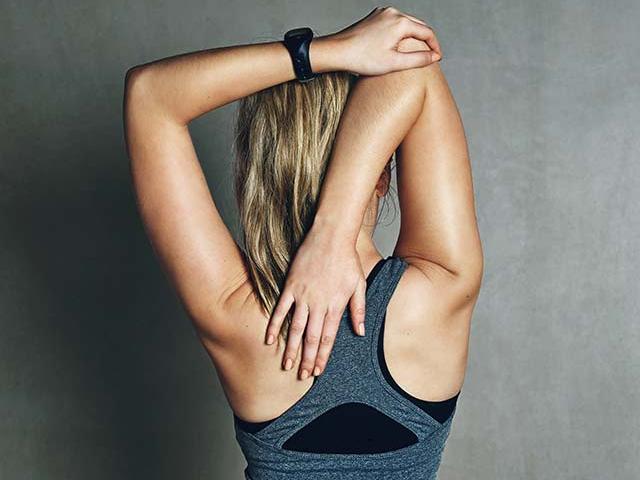
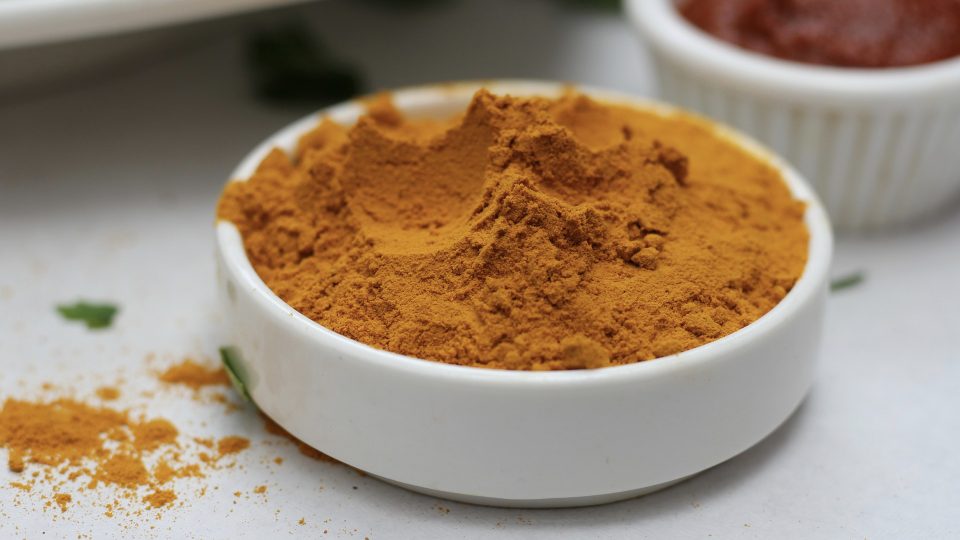
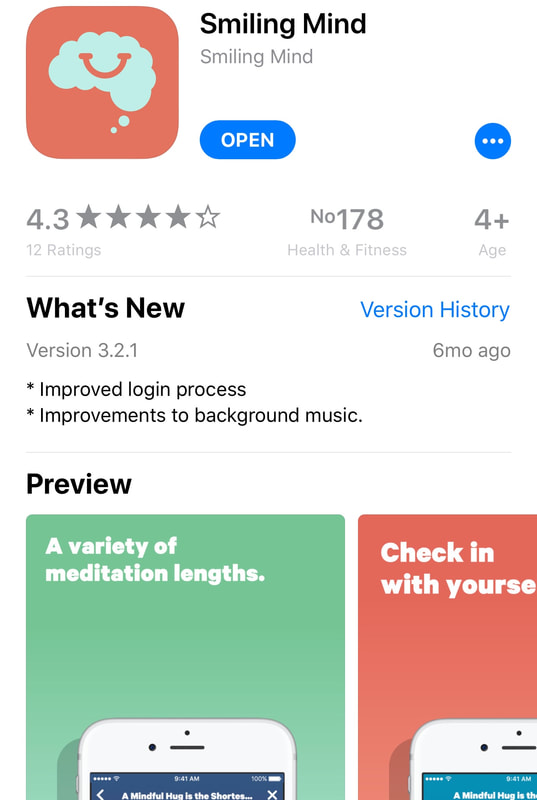

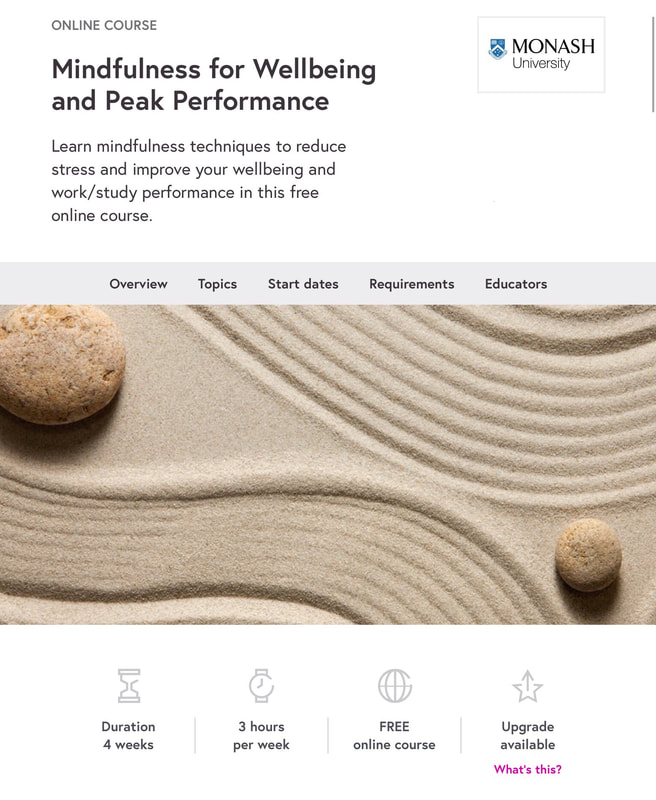
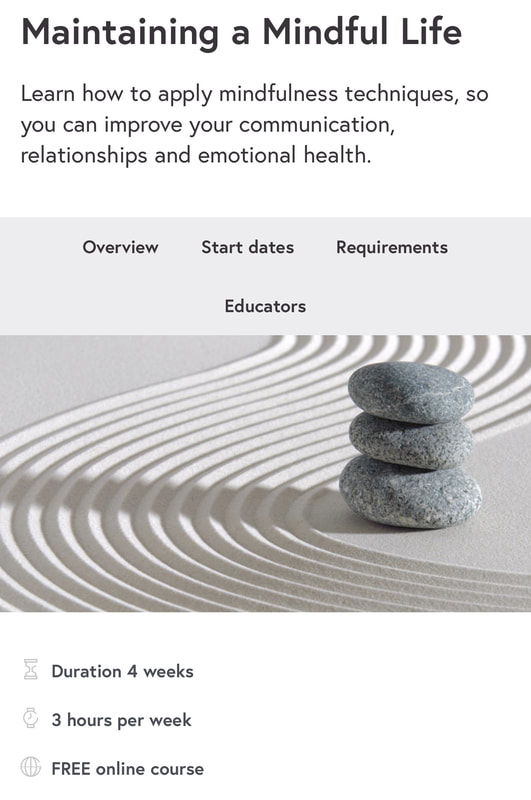
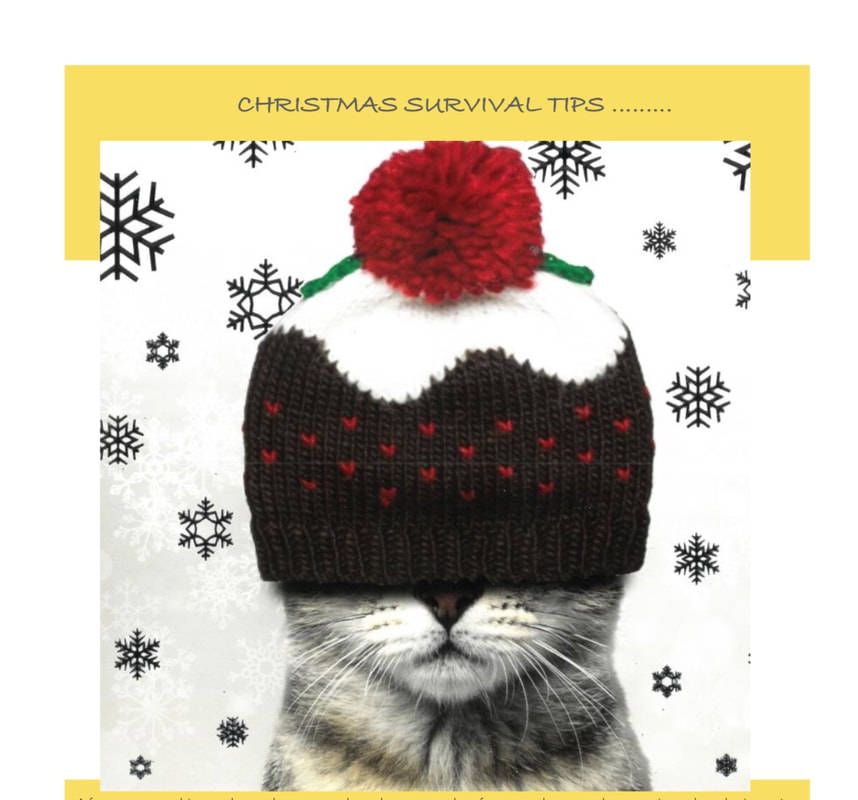
 RSS Feed
RSS Feed